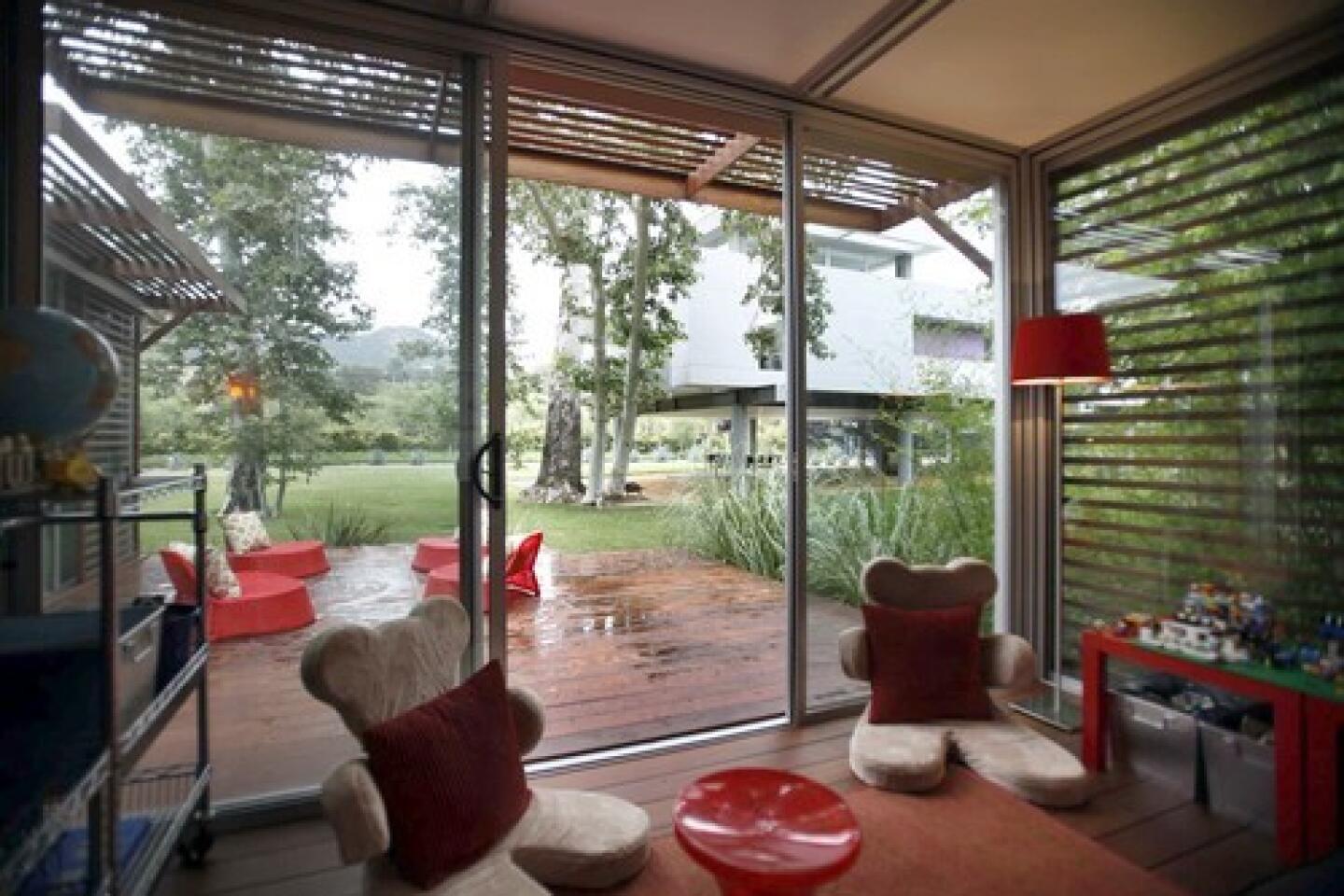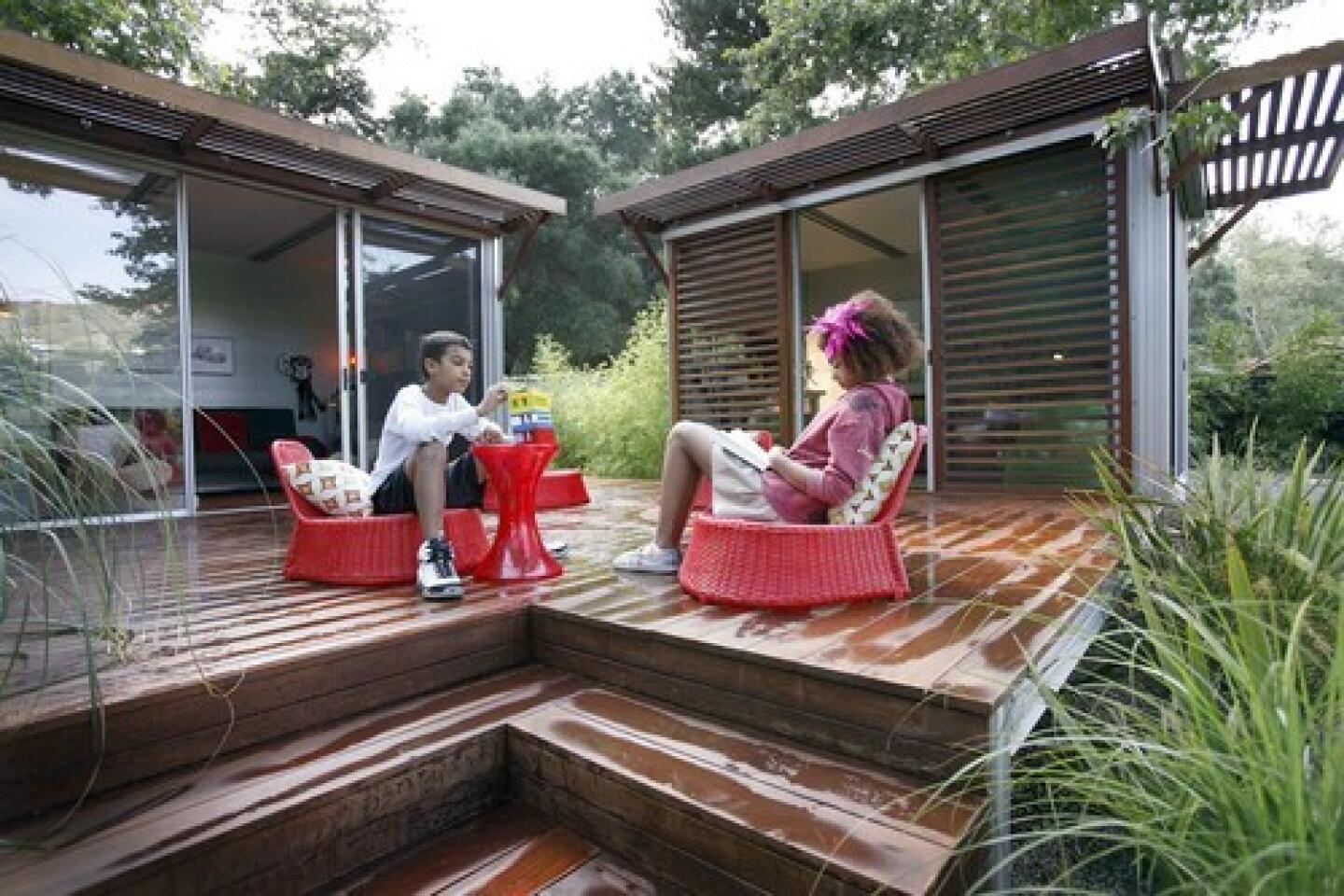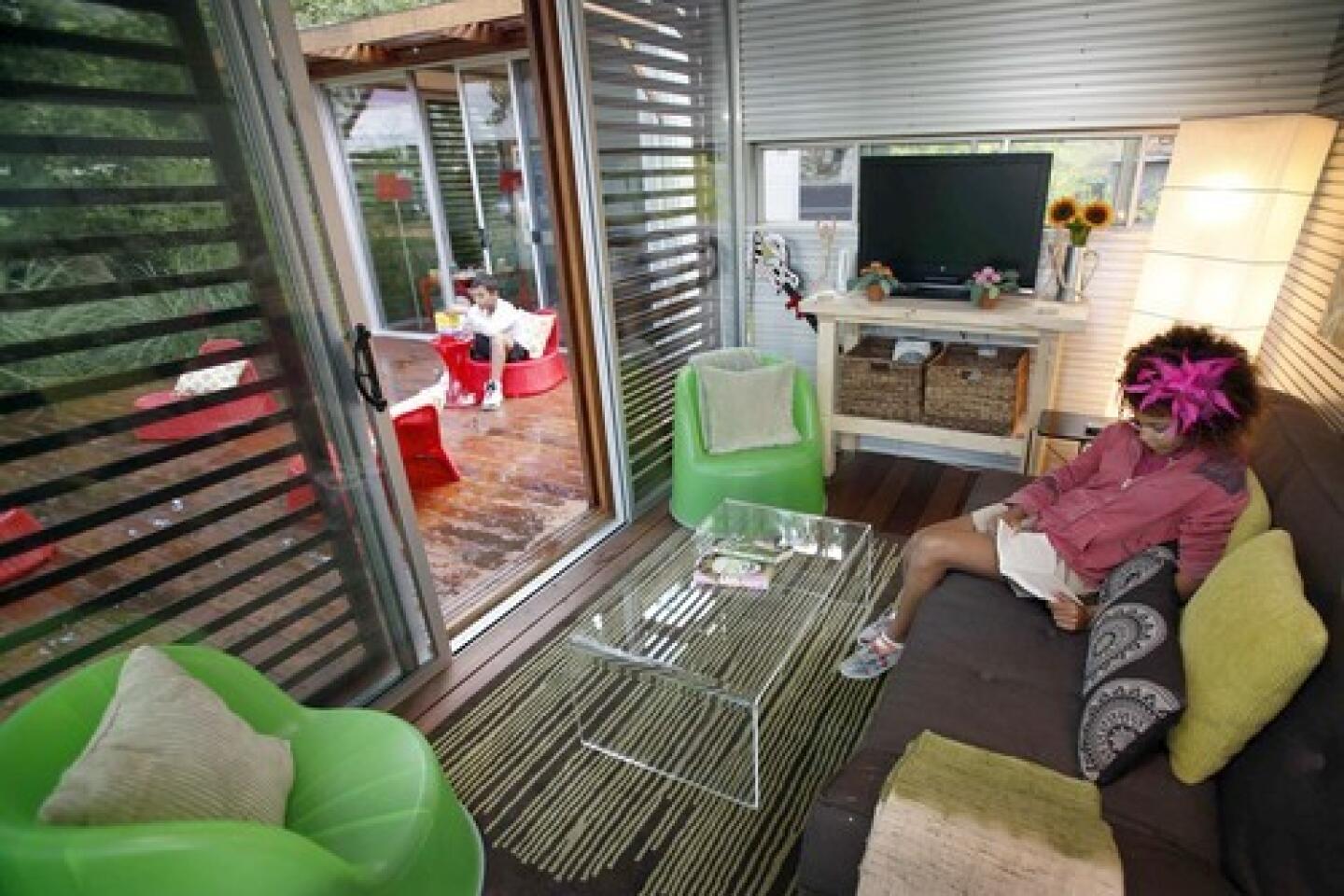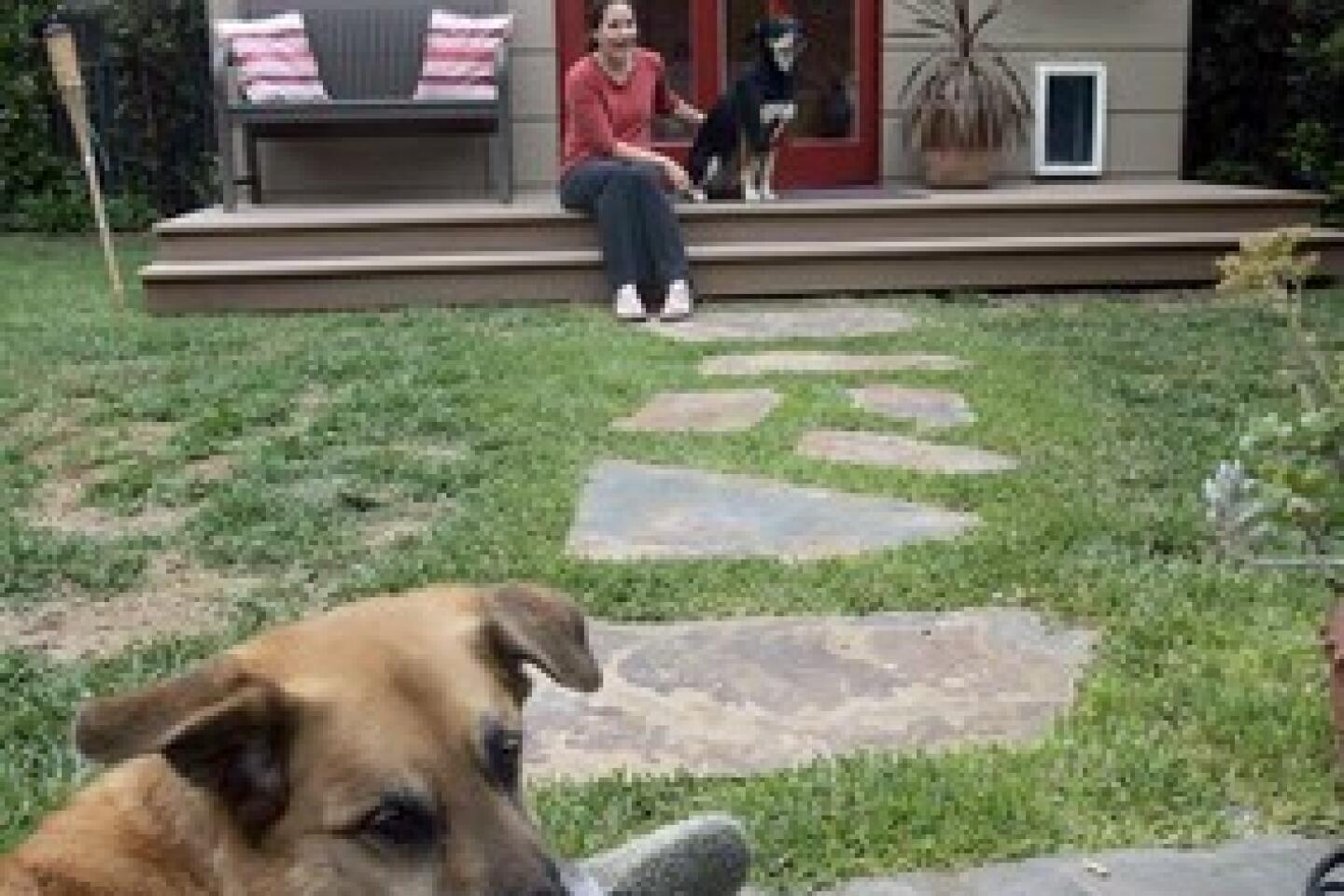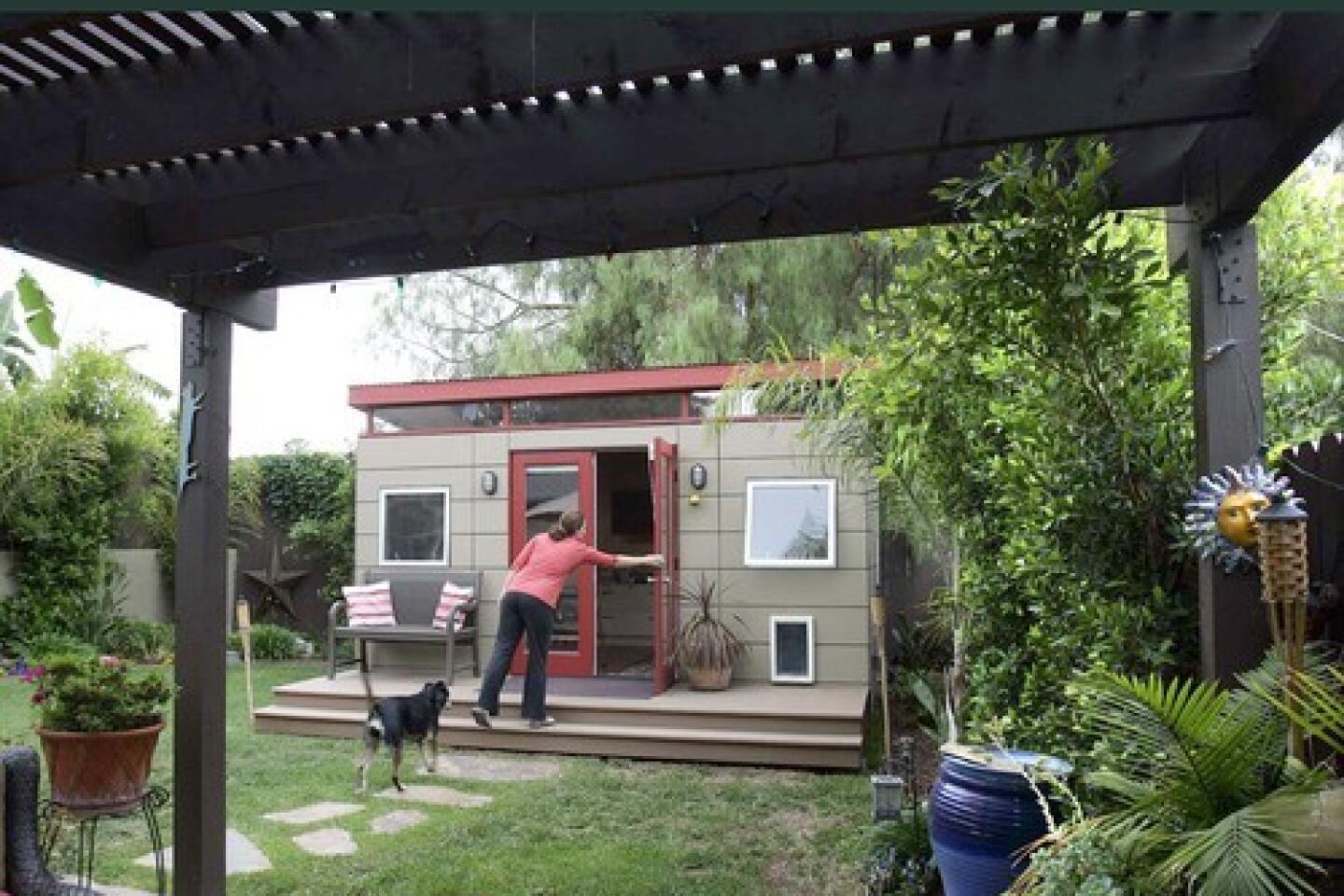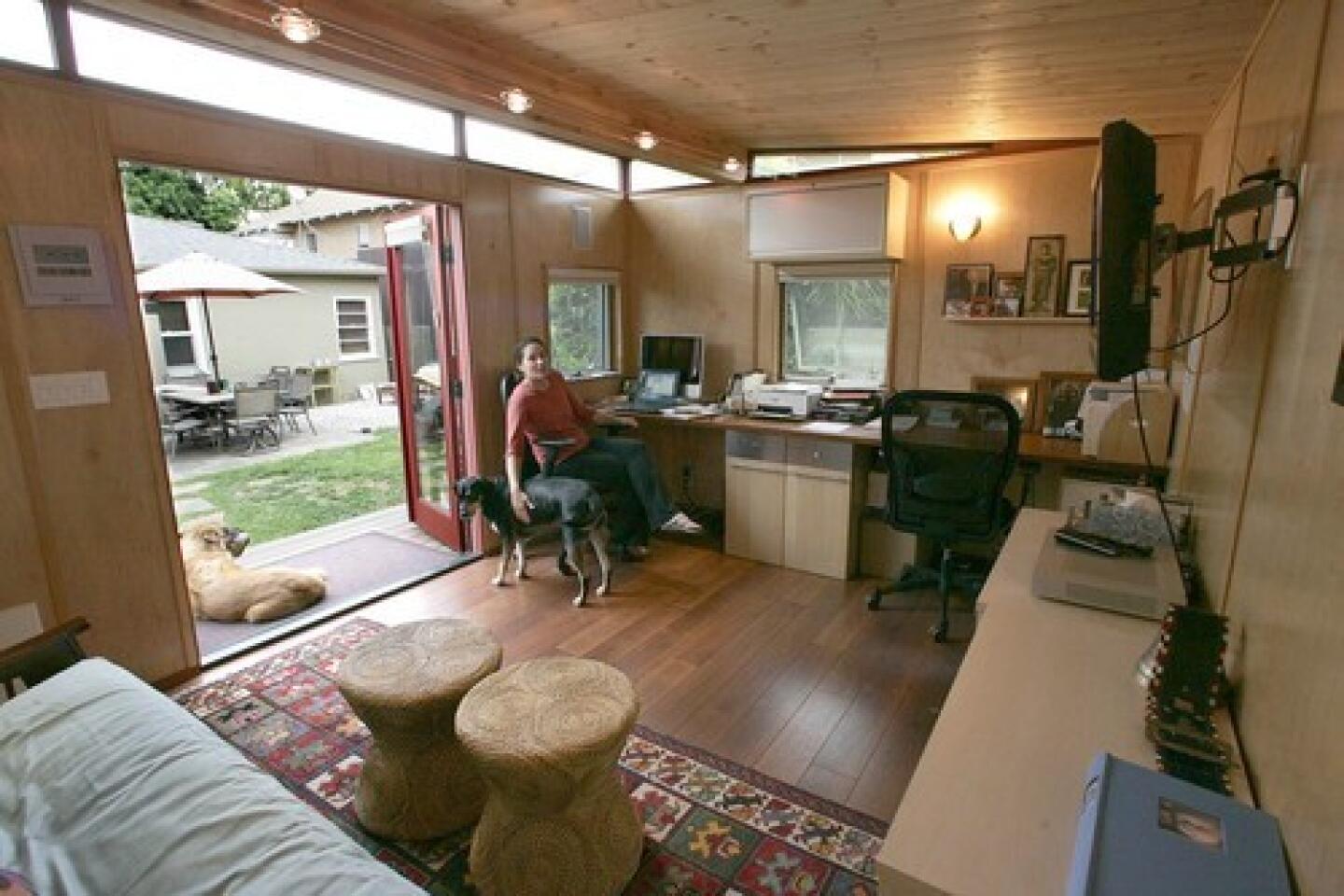Oh, get a room: the beauty of mini prefab buildings
- Share via
The situation: Bonnie and Michael Kelly needed extra space for their son and daughter to do homework and hang out with friends.
The problem: To hire an architect and build the kind of addition that the Agoura Hills couple wanted would have cost six figures.
FOR THE RECORD:
Prefab rooms: In today’s Home section, an article on backyard prefab structures describes Bonnie and Michael Kelly as being from Agoura Hills. They live in nearby Cornell. The article also says Warren and Kate Ostergard spent $25,000 on their Modern-Shed prefab. The structure cost $20,000, and they spent $5,000 more to add a deck, dog door, custom workstations, flat-panel TV and other features. —
The solution: The couple bought two 9- by 13-foot prefabricated buildings, which were assembled days after being delivered on flatbed trucks.
“It was instant gratification,” says Bonnie Kelly, who like her husband, a biotechnology executive, couldn’t be more satisfied with their $80,000 investment.
In recent years, prefab construction has generated plenty of buzz in magazines such as Dwell and at exhibitions such as one last year at the Museum of Modern Art in New York. The original promise of prefab decades ago was savings of time and money that could be passed along to consumers in the form of inexpensive housing. But because most of the premier manufacturers today specialize in custom homes that can cost $250 a square foot and up, prefab has been far more popular in design blogs and at home expos than with actual buyers.
One exception has been scaled-down prefab construction -- not entire houses but stand-alone additions. According to Casper Mork-Ulnes, co-founder of San Francisco manufacturer Modern Cabana: “Small prefab modules make sense for anyone who might need a home office, a guest house, a meditation or yoga space or a cigar room that can open to the outdoors.”
Modern Cabana is one of several companies poised to thrive while weak real estate values force homeowners to stay put rather than trade up. Some prefab manufacturers produce utilitarian buildings; others, more stylish ones. All provide extra living space.
KitHaus, among the most fashion-forward of the bunch, is based in Van Nuys and sold through Design Within Reach.
Modern-Shed, located in Seattle, has sold half of its 140 prefab buildings in California, where interest in contemporary architecture abounds.
“The West Coast has always been more adventurous,” says Ryan Smith, owner of Modern-Shed. “The modern aesthetic, which pretty much began in L.A., is a huge draw.”
Though some areas in California do not require permits for these so-called accessory buildings if they are less than 120 square feet, in Los Angeles County such permits are required for all habitable structures with electrical or plumbing. But once permit issues have been resolved, a kit structure’s appeal can go beyond a functional, attractive space. The buildings can be assembled in days, which means a family doesn’t have to relocate during construction or live with contractors traipsing through. And the buildings can be disassembled and moved.
“We used to live in Boston and still have a house in Maine,” Bonnie Kelly says. “Originally, we thought these buildings would add value to the house here when we sell. But if we move back to the East Coast, we’ll take them with us.”
When the Kellys decided to add space for their kids, Jared and Mara, they opted for sleek units from KitHaus. Each structure sports an aluminum frame and walls, sliding glass doors, operable windows and luxe options such as a deck, louvers and canopies made of sustainable ipe wood. Each can hold six kids during sleepovers, and if the Kellys put in the swimming pool they’ve been considering, the buildings could double as pool houses.
Playrooms and pool houses are all well and good, but prefab buildings also serve as home offices.
For film producer Warren Ostergard and his wife, Kate, a prefab building makes it possible to separate or combine work and play as needed.
With their son, Trip, on the way last summer, the Ostergards converted a bedroom in their Highland Park bungalow into a nursery, which meant their home office and guest room had to go elsewhere. So they bought a 12- by 16-foot kit building from Modern-Shed.
Less than a week after it arrived, the couple had an office with cement-board siding pre-painted to match the color and trim of their house. They wired their shed for custom workstations, wireless Internet, a flat-panel TV and surround sound, plus added a dog door. They paid $25,000, or about half what an office addition would have cost.
“Now, we’re able to walk out of the house to go to work because it’s a separate space,” says Kate Ostergard, marketing director for a travel website. “That’s great for us and for anyone staying overnight who doesn’t want to be in the way.”
Another benefit of prefab buildings is that they’re not susceptible to the project creep and cost overruns that often send remodeling budgets spiraling out of control. Because homeowners select materials and features from a manufacturer’s predetermined list of options, they know exactly what they’ll be getting and how much they’ll be paying.
So when urban planner Maya Dunne of Laguna Beach lost her job to downsizing and turned to freelancing, she and her husband, law professor John Dombrink, abandoned plans for an extensive master bedroom addition and renovation. Instead, they bought a 10- by 12-foot cedar structure from Modern Cabana to serve as her office.
“It’s a good solution for when things happen and your situation changes,” Dunne says. “It’s a way to accommodate the unexpected.”
For $22,000 -- plus permit fees -- Dunne got a cabana featuring double French doors and four full-length fixed windows that give it the airy feel of a garden pavilion. She incorporated eco-friendly upgrades such as recycled-denim insulation and bamboo flooring.
“With this office, I could balance affordability with sustainability,” Dunne says.
“I didn’t have to sacrifice my dream.”

